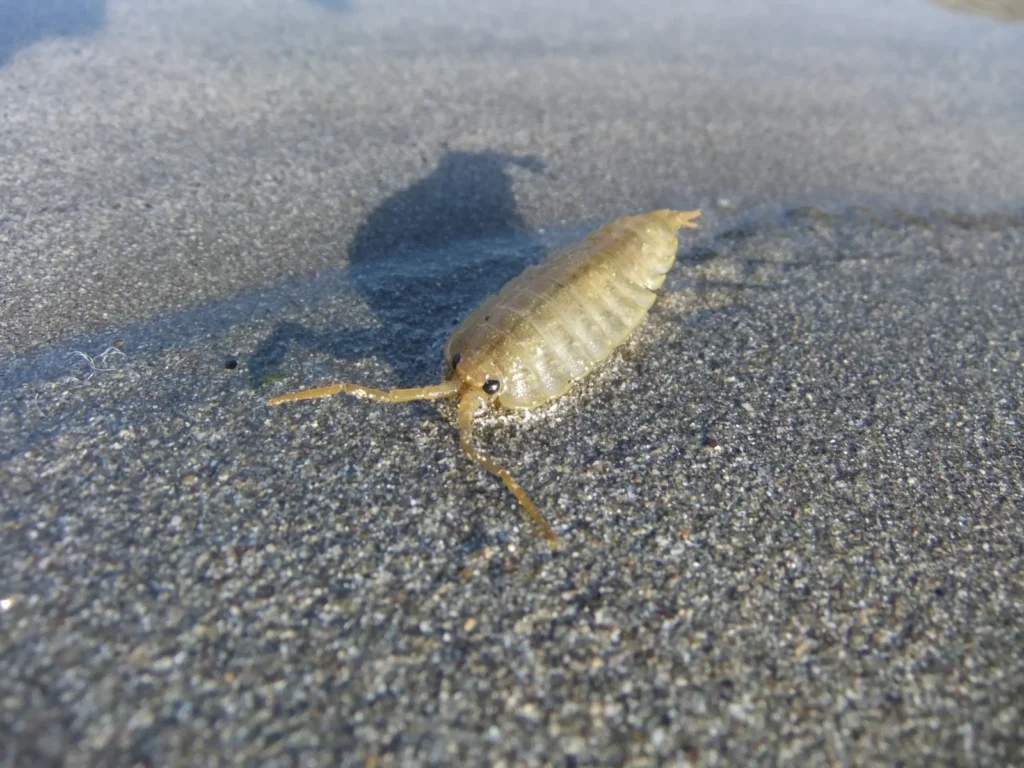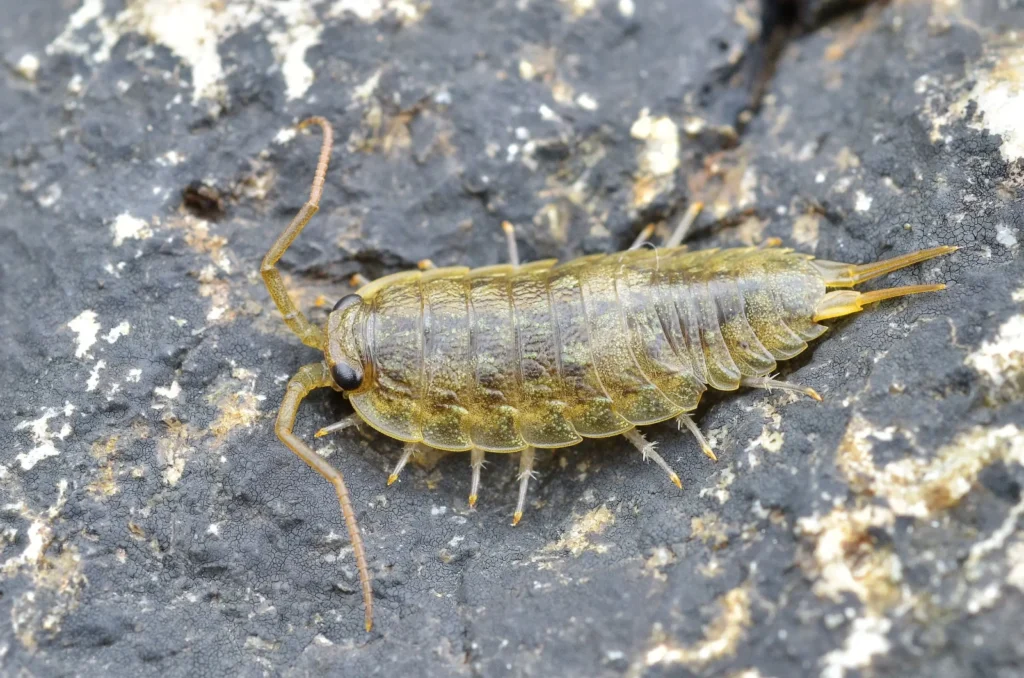Ligia oceanica - is a large isopod (from the order Isopoda) that lives in the coastal zones of the northeastern Atlantic. Due to its external resemblance to land woodlice, it is often called sea lice or even sea cockroach. Nevertheless, it is not a pest, but an important sanitary agent of the coastal ecosystem.

📚 Classification
• The Kingdom: Animalia
• Type: Arthropoda
• Class: Crustacea
• Row: Isopods (Isopoda)
• Family: Ligiidae
• Gender: Ligia
• View: Ligia oceanica (Linnaeus, 1767)
🔍 Appearance
📏 Sizes
- Body length: up to 3 cm (one of the largest isopods on land in Northern Europe)
🎨 Description
- Body flattened, elongated, oval in shape
- Has 7 segments with visible legs
- Color: gray or gray-brown with a metallic sheen
- The eyes are large, faceted, located on the sides of the head
- Long antennae (antennas) that are constantly moving
- Dorsal plates slightly scaly
🌍 Living environment
📌 Area
- Northern and Western Europe: coasts of Britain, Ireland, France, Scandinavia
- Baltic and North Seas
- Also found on the northern coast of Spain
🏖️ Places of residence
- Coastal areas, rocky shores, dams
- Tidal zone (intertidal), usually under rocks or in cracks
- Very humid environment - requires high humidity

🧠 Behavior
🌙 Activity
- Mostly nocturnal or twilight lifestyle
- Hides under stones, in crevices or algae during the day
🚶 Mobility
- He runs very fast - his movements are similar to those of a cockroach
- Can instantly disappear into shelters in case of danger
🧼 Cleaning up the environment
- Important role in organic processing: eats dead algae, fish, animal remains
- Helps to clean the coastal zone from decomposition
🍽️ Power
- Mostly saprophyte (consumes dead organic matter)
- Eating:
- fallen algae
- carrion (dead fish, mollusks, other invertebrates)
- by bacteria on surfaces - Sometimes eats human food scraps in coastal cities
🧬 Reproduction
🌱 Life cycle
- Bisexual
- The female carries eggs in a special chamber fermentation bags (like many isopods)
- Young animals are born looking like adults and go through several molts
📅 Life span
- Up to 2-3 years in the wild
🤯 Interesting facts
✔️ It is not a parasite and is absolutely harmless to humans
✔️ Sensitive to water pollution - an indicator of environmental cleanliness of the coast
✔️ Has a poorly developed ability to osmoregulate - does not survive in fresh water
✔️ Can stay underwater for a short time, but breathes only air through gills moisture is needed for breathing
✔️ No claws - different from crabs and crayfish
🏡 Is it possible to keep in captivity?
Yes, but it is rarely kept as a pet.
He needs:
- Wet terrarium
- Substrate of sand, pebbles, pieces of algae
- High humidity (90-100%)
- Constant access to fresh algae or pieces of fish food
🧾 Conclusion
Ligia oceanica - is a typical inhabitant of the wet rocky shores of Northern Europe. Despite its "unattractive" name, it performs an extremely important ecological function - the utilization of dead organic matter. This "sea cockroach" is not a pest, but a nature's orderly who deserves respect and preservation.